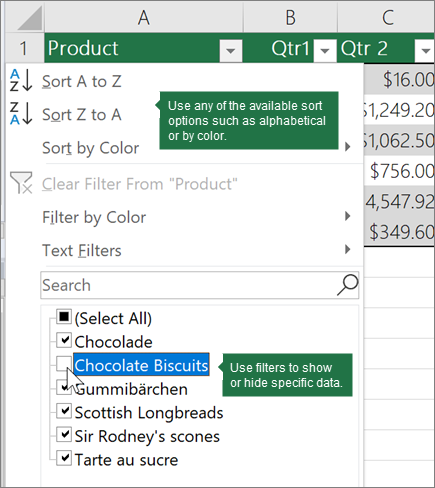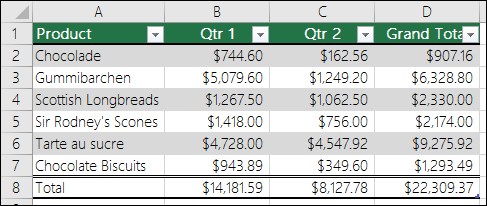

- #How to insert a table with headers in excel 2016 how to
- #How to insert a table with headers in excel 2016 manual
- #How to insert a table with headers in excel 2016 series
- #How to insert a table with headers in excel 2016 mac
- #How to insert a table with headers in excel 2016 windows
I bear no responsibility for any pickles you might get yourself into!īe careful Blogging Brexit Business Celebration Computers Copy-typing Copyediting Ebooks Errors Ethics Excel Facebook Guest posts Iris Murdoch Jobs Language use Localisation Marketing New skills Newsletters Organisation PowerPoint proofreading Prosopagnosia Punctuation Reading Reference materials Reviews SEO Short cuts Skillset Small Business Chat Social media Students Trados Transcription Troublesome pairs Twitter Uncategorized Volunteering What Do I Do? Why bother Windows Word WordPress Writingīook reviews - Richard Osman - "The Man Who Died Twice" and Georgia Hill - "The Great Summer Street Party (Pt. Always save a copy of your document before manipulating it.
#How to insert a table with headers in excel 2016 mac
Mac compatible versions of Word should have similar options. Please note, these hints work with versions of Microsoft Word currently in use – Word 2003, Word 2007 and Word 2010, all for PC.
#How to insert a table with headers in excel 2016 series
This is part of a series on Tables which I’ll be writing and publishing over the next few weeks.
#How to insert a table with headers in excel 2016 how to
Today we’ve learned how to make the header rows repeat in a Word document. Select the Table menu and click Heading Rows Repeat. In Word 2003, you will need to use menus rather than the ribbon. Make sure that you highlight BOTH rows that you want to repeat, and press the Repeat Header Rows button as before:Īnd there you go: the first two lines of the table repeat on each page: You can display multiple header rows in Word in the same way. How do I repeat multiple header rows in Word? You can see that the first entry on the second page is no longer Coleridge, but the header row is still in place: Here, I’ve changed the text size to make it larger.

#How to insert a table with headers in excel 2016 manual
Using the automatic function means that, whatever you do to your table, the top row of a new page will always be the header row (UNLESS you force a manual page break). But then, if you move the text of the table around or resize it, you risk your manual header row not being the top row of your page. Here’s the magical thing: you can of course do this manually by inserting a row at the top of each page of your table. Note: if you don’t have a row selected, the Repeat Header Row button will be greyed out and you can’t press it. Like magic, if you scroll down the page, you will now see that your header row is repeated! Find the Repeat Header Rows button:Ĭlick on the Repeat Header Rows button. Now, because you’ve got a table in your document, Word will have added the Table menu tabs to your ribbon. Select the header row of your table so that you can tell Word that this is the header row by left-clicking with your cursor to the left-hand side of that row: Word defaults to Print Layout view, but check, just in case: Please NOTE that we’re in Print Layout view on the View menu at the moment: when we repeat the headers, the repeat is only visible in Print Layout or Print Preview, both of which show you what your document will look like when it’s printed.

OK, it’s fairly self-explanatory, but I might forget what the Acquired and Read headers are.Īt the moment, when the table goes onto the next page of the document, the table just carries on, with no header rows on the second and third pages: Now, this is a long list, and it goes over more than one page. We’re going to use the example of a list of books I have read. But if you think that the person who will consult the table will need to keep reminding themselves about what the different columns contain, it’s useful to add the header row at the top of each page.ĭoing this automatically rather than manually inserting a new row into each page of the table ensures that however much the table changes, the header row will stay at the top of each page. If you’re presenting a table which contains fairly self-explanatory information, for example, name, surname, book title, year, then you probably don’t need to repeat the heading row, even if the table runs across more than one page. This article shows you how to do that in Word 2007 and Word 2010 (we use the same procedure for both) Why would I want to repeat my header row on multiple pages? If you have got a table that extends over several pages in a Word document, it’s useful to be able to repeat the header row at the top of each page automatically, so that it stays there no matter what you change in the table itself.


 0 kommentar(er)
0 kommentar(er)
